50 Types of Purple Flowers (With Pictures)
-
Pete Ortiz
- Last updated:
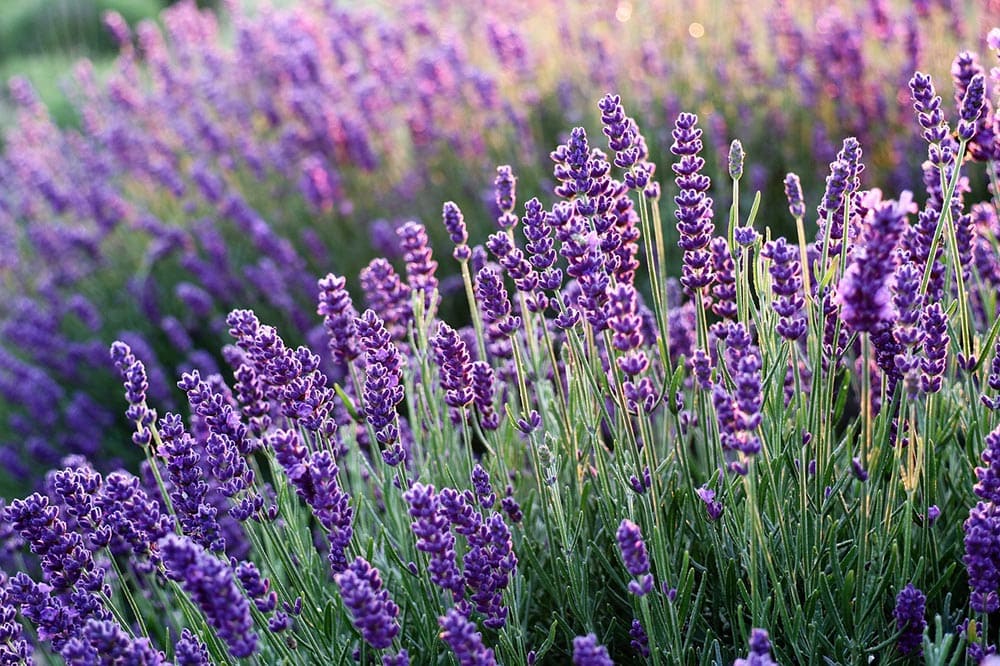
Purple flowers can be added to any garden or bouquet for additional vivacity and life. Of course, you could always add well-known purple flowers, such as hydrangeas or orchids, but there are many other purple flowers you might want to consider. Browse through the 50 purple flowers below to get some ideas.
 The 50 Types of Purple Flowers
The 50 Types of Purple Flowers
1. Allium
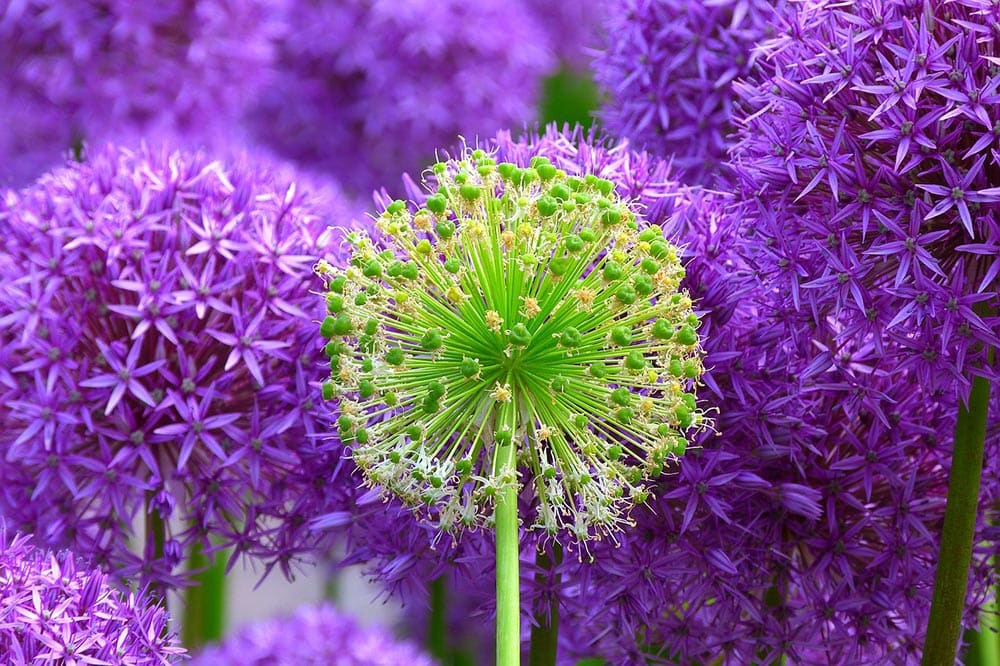
| Botanical Name: | Allium |
| Other Names: | None |
| Soil: | Well drained |
| Watering: | Tolerant to drought and infrequent watering |
Alliums have spherical blossoms that sit on top of a single stalk, almost like a lollipop. Because of the Allium’s unique look, they look beautiful in any garden. Not to mention, pollinating insects love them.
2. Alpine Betony
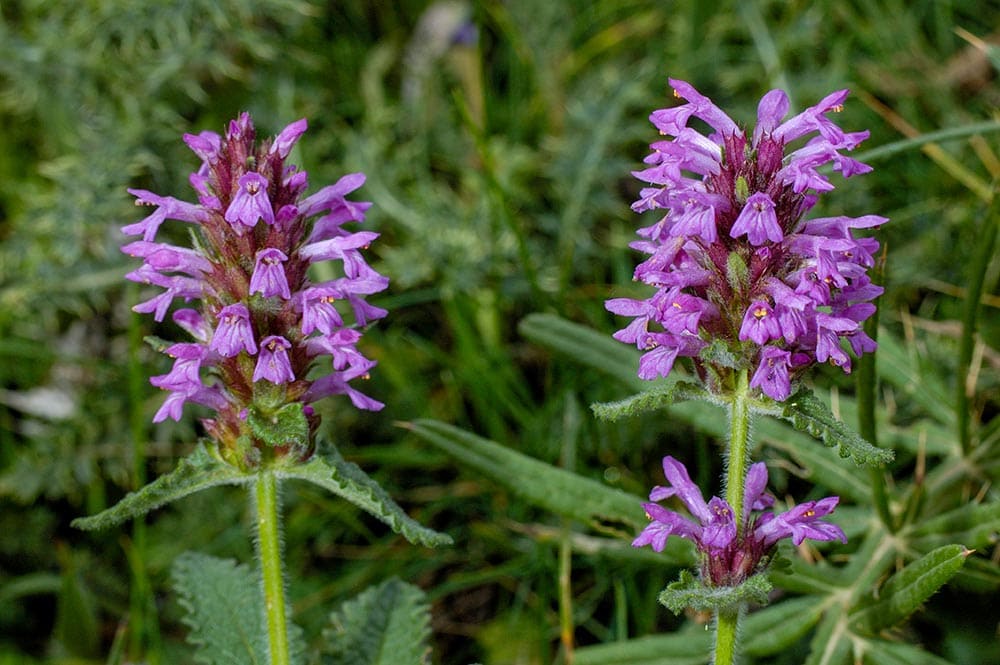
| Botanical Name: | Stachys monieri |
| Other Names: | Hummelo Betony |
| Soil: | Average to well-drained |
| Watering: | Tolerant to drought and infrequent watering |
Alpine Betonies look whimsical and abundant. These perennial plants have textured leaves that almost look like starbursts. Deer and rabbits tend to avoid these plants, making them a perfect choice if you are trying to protect your garden from other wildlife.
3. Anemone

| Botanical Name: | Anemone nemorosa |
| Other Names: | Wood Anemone |
| Soil: | Rich and acidic |
| Watering: | Moist soil |
The Anemone has dark green leaves with groups of three, petite purple flowers. These plants can be found all throughout Europe, and many varieties exist for gardening purposes. They are perfect beneath trees and shrubs where they have partial or full shade.
4. Anise Hyssop
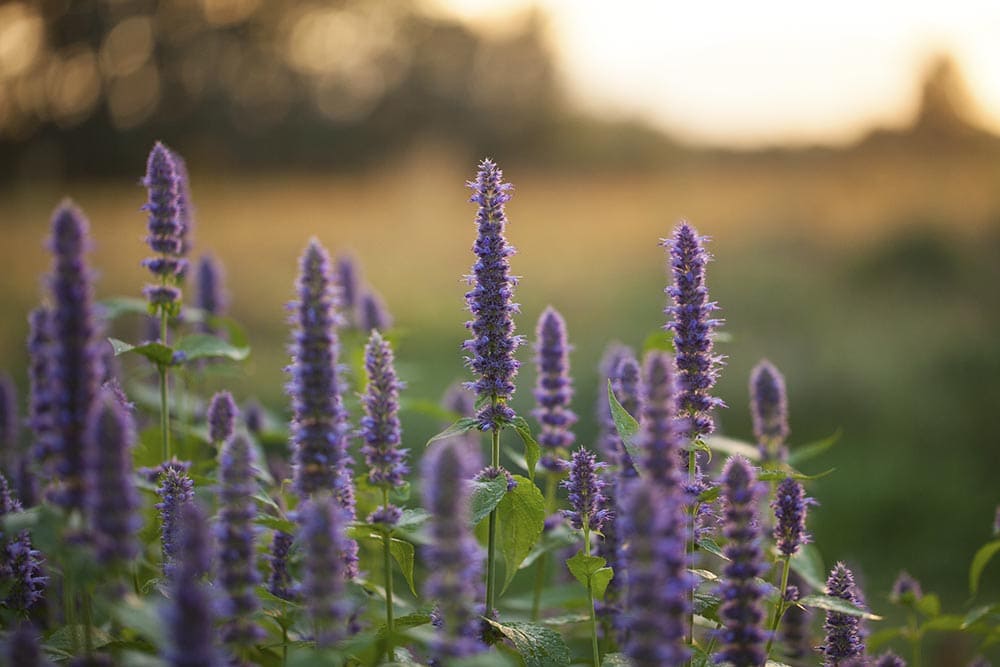
| Botanical Name: | Agastache foeniculum |
| Other Names: | Blue Giant Hyssop |
| Soil: | Sandy and well-draining |
| Watering: | Drought and infrequent watering tolerant |
Anise Hyssops are known for their cone-shaped blooms that attract butterflies, bumblebees, and even hummingbirds. These plants can grow up to four feet tall and be covered in dozens of flowers. These perennials are also very hardy and resist damage from other animals.
5. Aster Daisy
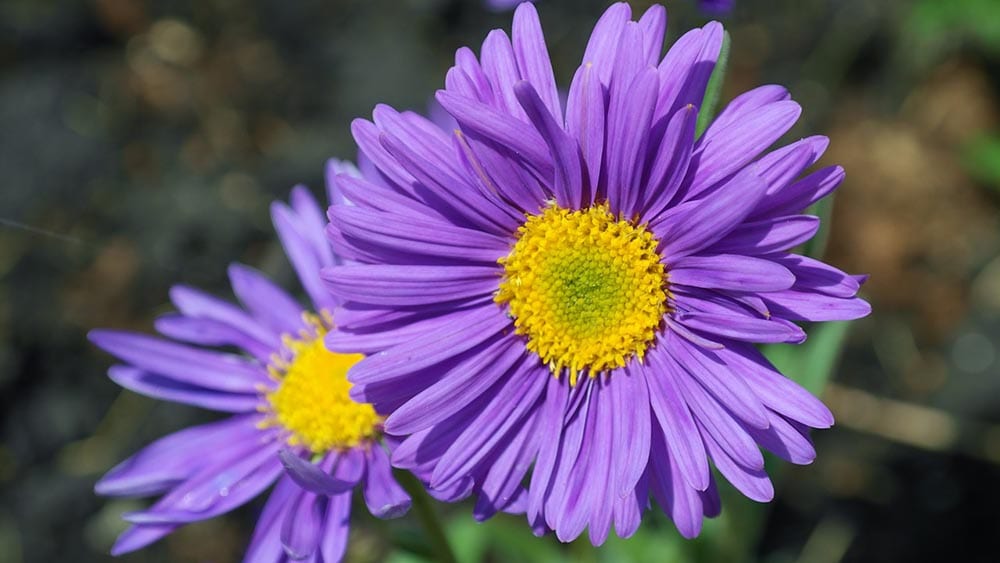
| Botanical Name: | Aster |
| Other Names: | None |
| Soil: | Well drained |
| Watering: | Drought and infrequent watering tolerant |
The Aster Daisy has about 180 species. Depending on the species, these flowers can grow between eight inches and eight feet tall. Regardless of what type you select, the Aster is named after its starlike design. It has a bright yellow center that is surrounded by rings of purple petals.
6. Balloon Flower
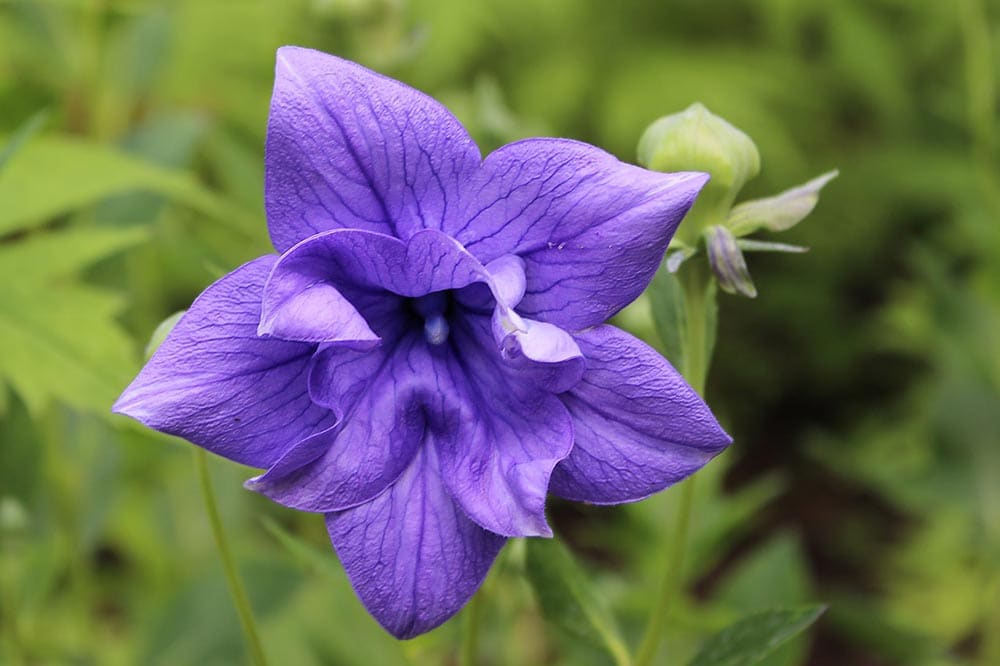
| Botanical Name: | Platycodon grandifloras |
| Other Names: | None |
| Soil: | Well drained and rich |
| Watering: | Moderate moisture |
The Balloon Flower is the only species of its genus, but it is still highly popular because of its beautiful bursting appearance. In addition to looking stunning in any garden, Balloon Flowers are used for medicinal purposes and cooking ingredients in Korea.
7. Bell Flower

| Botanical Name: | Campanula |
| Other Names: | None |
| Soil: | Well drained |
| Watering: | Moderate moisture |
The Bell Flower belongs to a genus that has over 500 species and even more subspecies. These flowers have a star or bell-like shape during the blooming season, which lasts from June and extends into October. These are a great choice if you need to cover a lot of ground with your flowers.
8. Bell Heather

| Botanical Name: | Erica cinerea |
| Other Names: | Twisted Heath |
| Soil: | Well drained, acidic |
| Watering: | Drought tolerant but average watering otherwise |
The Bell Heather is technically a shrub, but it has beautiful purple blossoms. In addition to the blossoms, the leaves are green and spiky, which makes them generally resistant to deer and other animals. These flowers also resist pests very well, making them a great low maintenance choice.
9. Butterfly Bush
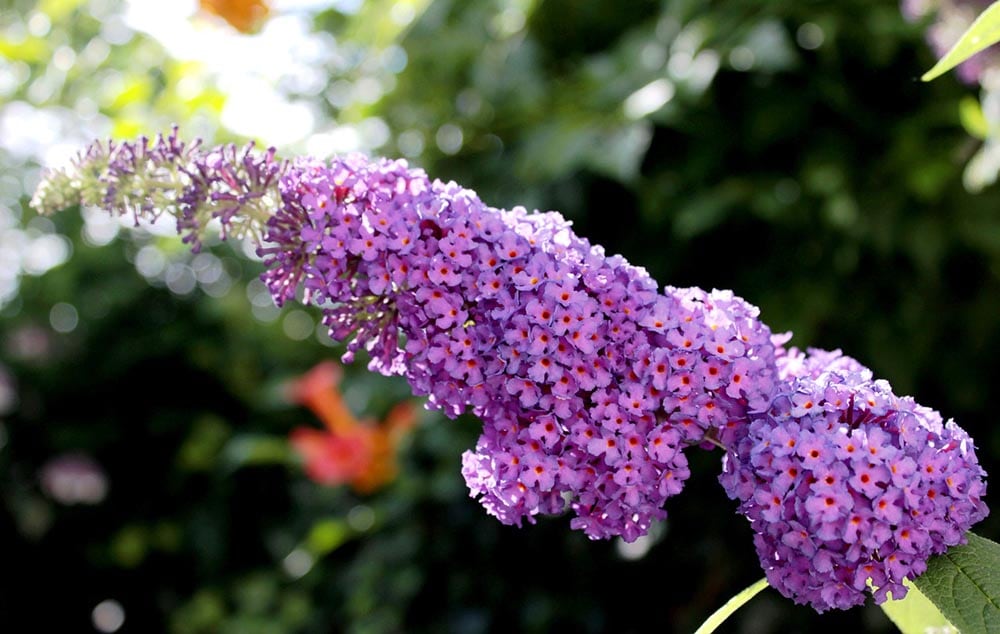
| Botanical Name: | Buddleja davidii |
| Other Names: | Summer Lilac, Orange Eye |
| Soil: | Well drained |
| Watering: | Moderately moist |
The Butterfly Bush is a gorgeous shrub that somewhat looks like Wisteria. It has petite blossoms and a weeping silhouette. The plant even smells like honey, which is why the shrub attracts butterflies and other pollinating insects.
10. Candytuft

| Botanical Name: | Iberis pruitii |
| Other Names: | Pruit’s Candytuft |
| Soil: | Well drained |
| Watering: | Regular watering |
Candytufts often have multiple shades, ranging from light lavender to darker purple. These flowers grow wildly and help to suppress any weed growth.
11. Canterbury Bells

| Botanical Name: | Campanula medium |
| Other Names: | None |
| Soil: | Well drained but still moist |
| Watering: | Moderately moist |
Though native to southern Europe, Canterbury Bells are a favorite everywhere. They have a perfect bell-like shape with a lot of pollen, making them a great flower to attract butterflies, bees, and other pollinators. Often, Canterbury Bells are associated with gratitude, faith, and constancy.
12. Carnation

| Botanical Name: | Dianthus caryophyllus |
| Other Names: | None |
| Soil: | Well drained, neutral to alkaline soil |
| Watering: | Moderately moist |
The Carnation is one of the most easily recognizable flowers. Despite how popular these flowers are, they are an amazing purple flower to add to your garden. Their ruffles and shades of purple will add a lot of life and texture to any garden, no matter how lackluster it may look now.
13. Cattleya Orchid

| Botanical Name: | Cattleya |
| Other Names: | None |
| Soil: | Well drained |
| Watering: | Water only when soil is dry |
The Cattleya Orchid is found in tropical regions, ranging from Costa Rica to Argentina. This flower has intricate patterns with various hues of purple. Although they are not suitable for all outdoor gardens, they are relatively easy to grow indoors.
14. China Aster

| Botanical Name: | Callistephus chinenis |
| Other Names: | None |
| Soil: | Well drained |
| Watering: | Regular watering |
China Asters are cheerful and perky. Their pompom-like top pops out in most gardens, especially because of their purple coloration. Because of how hardy these flowers are, they are ideal for just about any location.
15. Clematis

| Botanical Name: | Clematis |
| Other Names: | None |
| Soil: | Well drained, neutral to alkaline soil |
| Watering: | Weekly watering |
Clematis is a type of climbing vine that can add a lot of texture and color to any garden. This versatile plant can grow on the ground, but it can also be trained to climb up fences and other vertical surfaces. The color of the flowers range from light lavender to dark violet.
16. Coneflower

| Botanical Name: | Echinacea purpurea |
| Other Names: | Coneflower, Purple Coneflower |
| Soil: | Well drained, rocky or clay soil |
| Watering: | Draught tolerant |
The Coneflower, more formally known as Echinacea, has been used for its medicinal properties for years. In addition to their numerous immune system boosting properties, these flowers are gorgeous. They have a bulbous, orange center with vibrant purple petals surrounding them.
17. Cosmos Daisy

| Botanical Name: | Cosmos bipinnatus |
| Other Names: | Cosmos, Garden Cosmos, Mexican Aster |
| Soil: | Well drained |
| Watering: | Drought tolerant, moderate moisture preferred |
The Cosmos is a type of Daisy with a light purple color. The light purple petals contrast from the bright yellow center. Often, Cosmos Daisies are used for ornamental purposes and can even be grown in garden containers.
18. Crocus
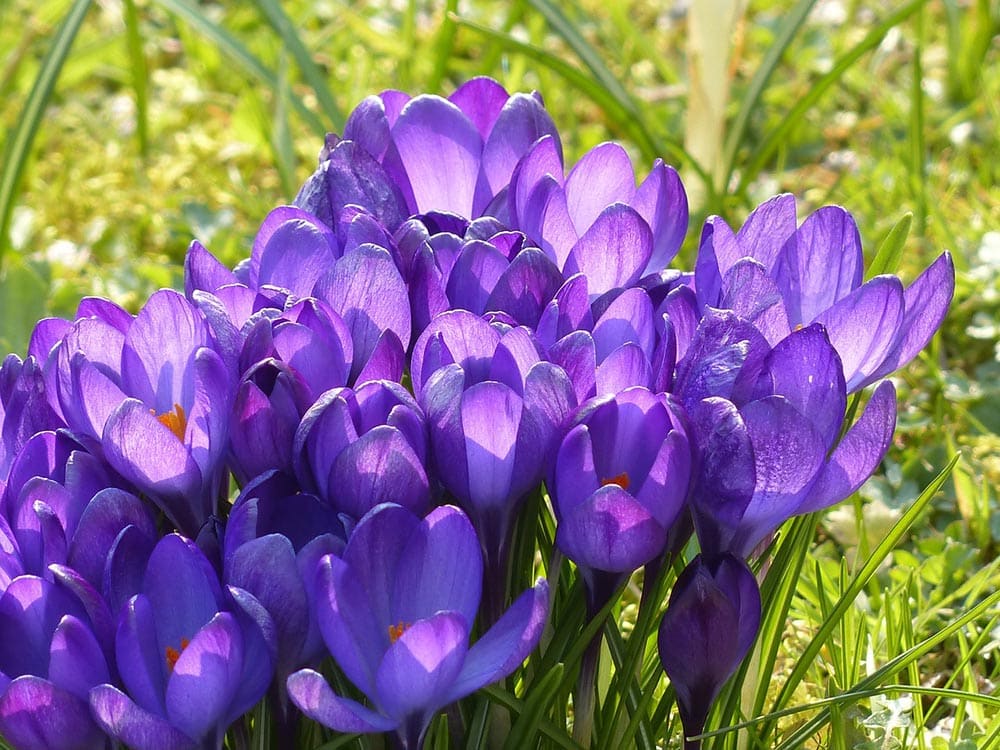
| Botanical Name: | Crocus vernus |
| Other Names: | Spring Crocus, Giant Crocus |
| Soil: | Well drained |
| Watering: | Moderately moist |
The Crocus is one of the first flowers to bloom in the spring. Sometimes, they will even begin sprouting when the snow has not yet melted. Interestingly, their petals close during the night and stay closed during rainy days.
19. Dendrobium Orchid

| Botanical Name: | Dendrobium |
| Other Names: | None |
| Soil: | Well drained, coarse and acidic soil |
| Watering: | Only water whenever soil is medium to slightly dry |
Orchids are some of the most diverse flowers. The Dendrobium Orchid has an almost silk-like appearance with waxy green leaves. These flowers look very romantic and often cling to trees, rocks, and other surfaces.
20. Dwarf Iris

| Botanical Name: | Iris reticulata |
| Other Names: | None |
| Soil: | Well drained |
| Watering: | Tolerant to drought and infrequent watering |
The Dwarf Iris is a small iris that can only grow to be six inches tall. Its leaves are ribbed but surrounded by floppy petals. Dwarf Irises make good border plants because they only need partial shade, but they can handle full sun too.
21. European Periwinkle
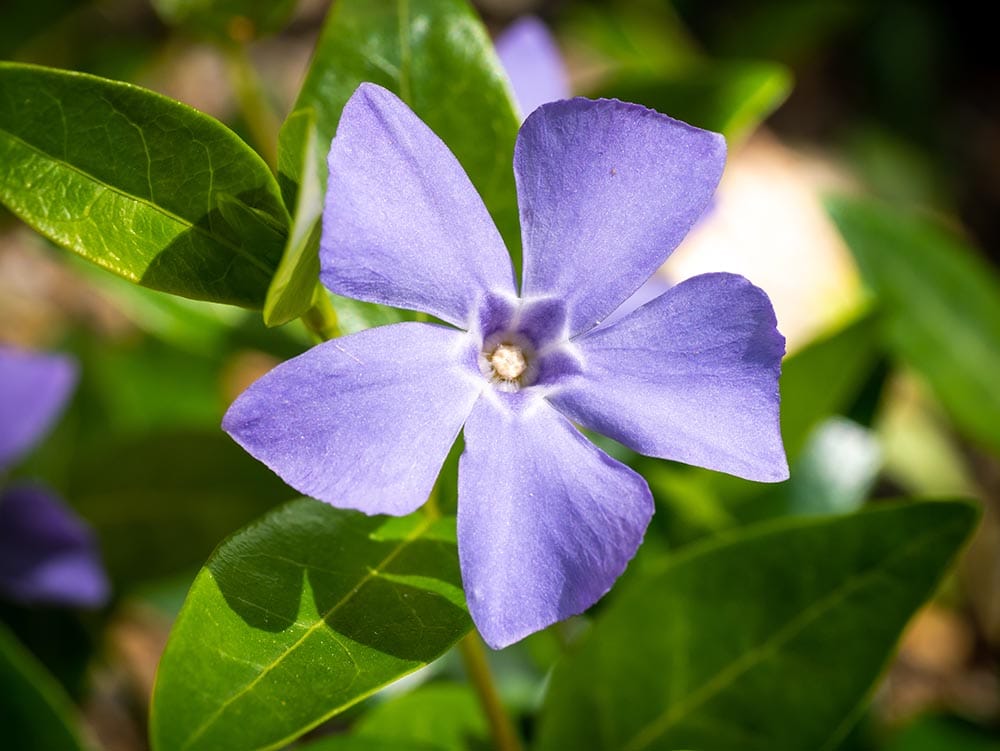
| Botanical Name: | Vinca |
| Other Names: | Common Periwinkle, Creeping Myrtle |
| Soil: | Well drained |
| Watering: | Moderate to light watering |
As you would expect, European Periwinkles have a beautiful purple color. Their leaves are simple, but the five petals on the bloom are very pretty to look at. These flowers spread aggressively and will cover a lot of ground.
22. Foxglove

| Botanical Name: | Digitalis purpurea |
| Other Names: | Lady’s Glove |
| Soil: | Well drained, acidic soil |
| Watering: | Moderately moist |
Foxgloves are a favorite among gardeners and non-gardeners alike because they are so interesting to look at. Their blossom is a bell-shaped flower, but the inside of the bell houses speckled patterns that are gorgeous to look at.
23. Geranium
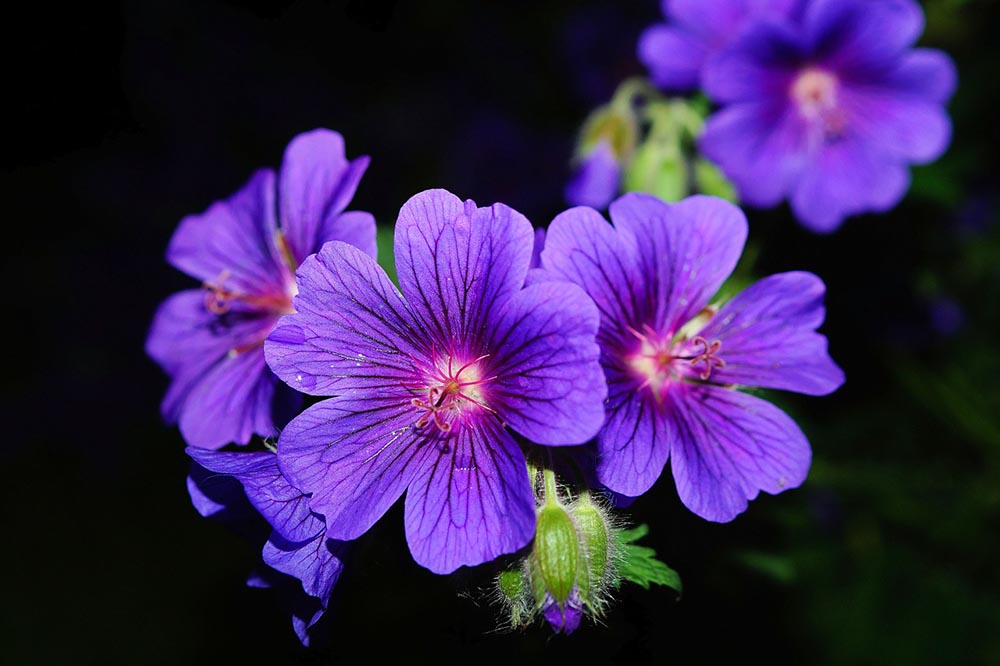
| Botanical Name: | Geranium |
| Other Names: | None |
| Soil: | Well drained |
| Watering: | Moderately moist |
No matter where you live, you can likely get ahold of some Geraniums. Every spring, garden centers around the world sell these gorgeous flowers. Geranium petals have a radial symmetry, allowing all of the petals to be identical.
24. Gladiolus
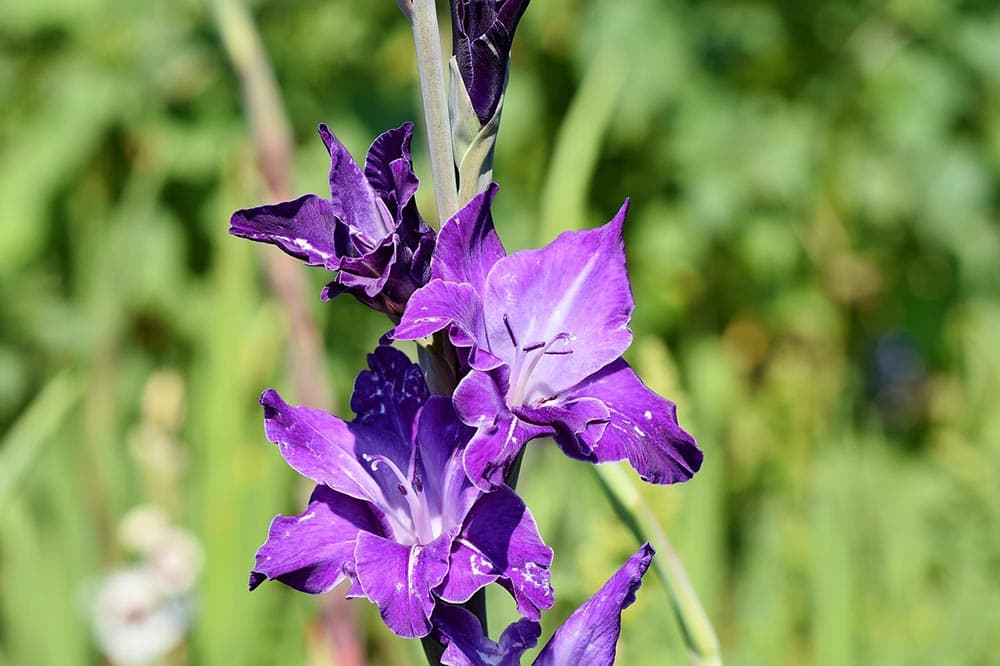
| Botanical Name: | Gladiolus hortulanus |
| Other Names: | Glads, Sword Lily |
| Soil: | Well drained |
| Watering: | Moderately moist |
The Gladiolus belongs to the Iris family. Its leaves are shaped like swords with giant spikes that can grow to be six feet long. The blossoms come in the late summer when they look very light and silk-like.
25. Heliotrope
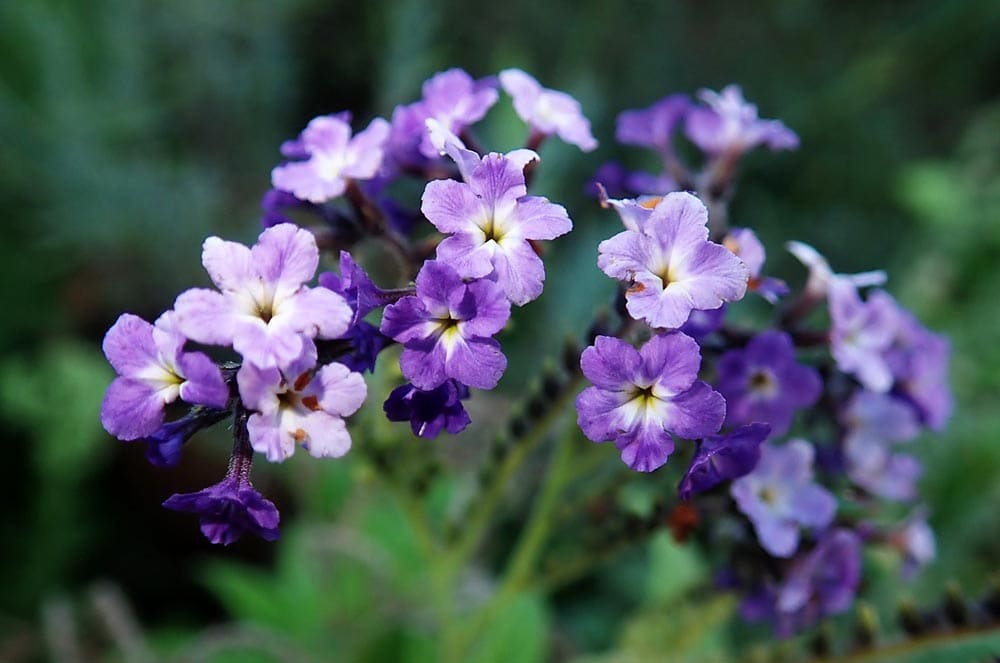
| Botanical Name: | Heliotropium peruvianum |
| Other Names: | None |
| Soil: | Well drained |
| Watering: | Moderately moist |
Even though Heliotropes are only native to Peru, they can grow in many environments, allowing the flowers to be found all around the world. The shrub only grows to be two feet tall. The foliage is soft and green and topped with clusters of purple, petite flowers. Note that this flower is highly toxic to most pets and humans.
26. Hellebores

| Botanical Name: | Helleborus |
| Other Names: | Hellebore, Winter Purple Rose, Lenten Rose |
| Soil: | Well drained |
| Watering: | Drought tolerant, prefers moderate moisture |
Hellebores are beautiful evergreens that have an enchanting look and haunting shades of purple. Its haunting look is fitting since most of its genus includes poisonous flowering plants.
27. Hibiscus

| Botanical Name: | Hibiscus |
| Other Names: | None |
| Soil: | Well drained, slightly acidic to neutral soil |
| Watering: | High moisture |
The hibiscus is a flowering shrub found in warm and temperate climates. With trumpet-shaped blooms, the hibiscus has beautiful colors and silhouettes. Not to mention, the flower can be turned into a delicious and healthy tea.
28. Hyacinth

| Botanical Name: | Dichelostemma capitatum |
| Other Names: | None |
| Soil: | Most |
| Watering: | Drought tolerant |
Many people mistake them with the Crocus flower because of their cluster-like leaves. Their purple petals really stand out because of the orange stamens that contrast shockingly.
29. Hydrangea
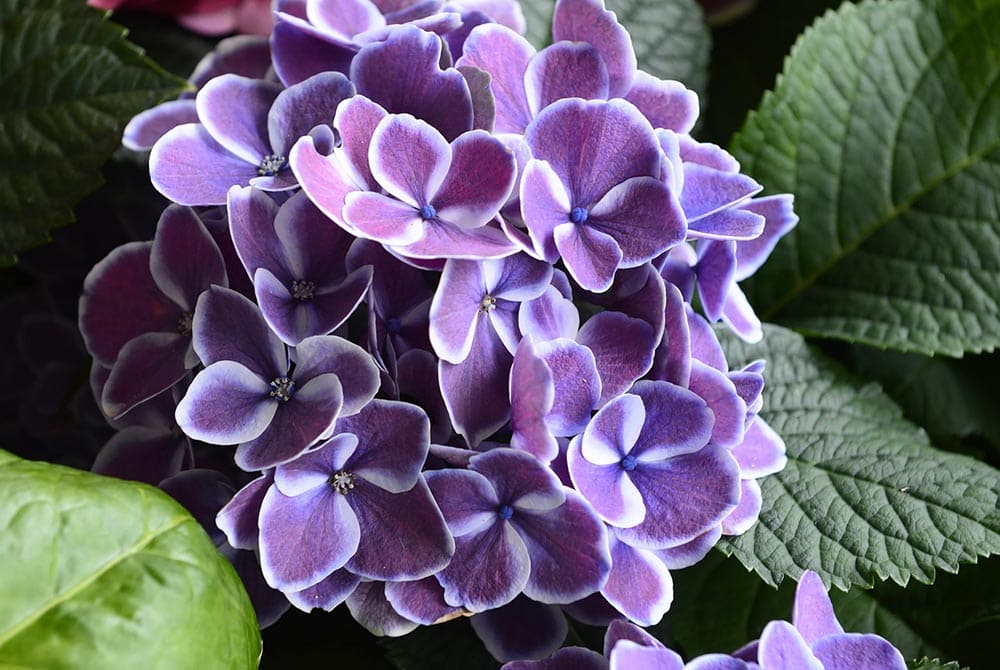
| Botanical Name: | Hydrangea |
| Other Names: | None |
| Soil: | Well drained |
| Watering: | Moderate moisture |
Hydrangeas come in many colors, ranging from white to violet. The color most often relates to the soil’s pH balance. So, you will need to research what kind of soil your Hydrangea needs for it to have a purple appearance.
30. Lavender
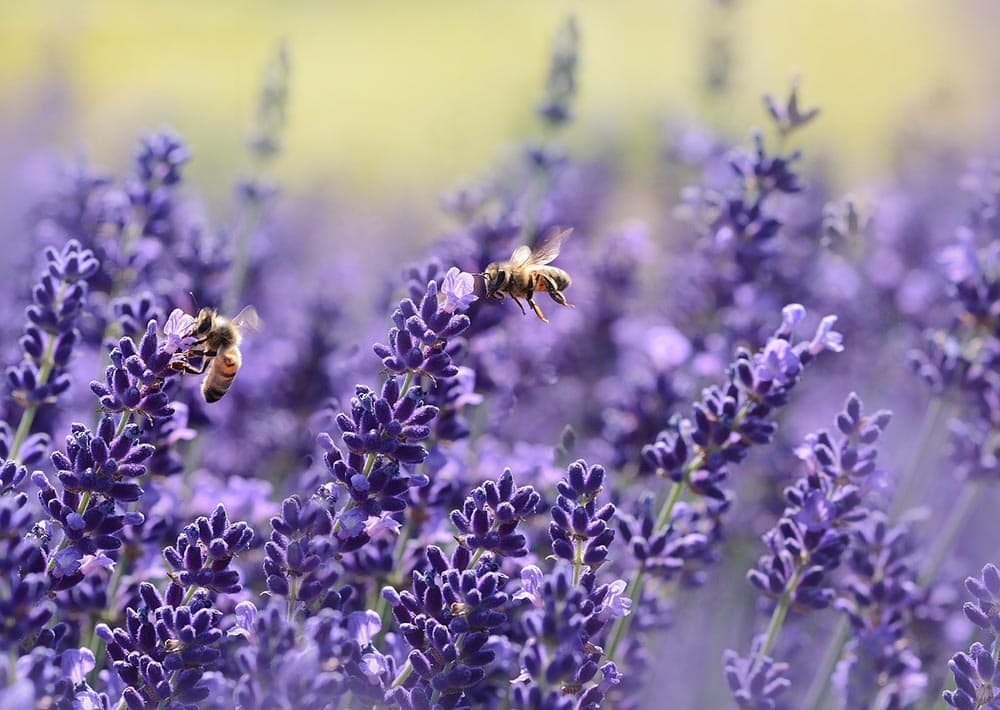
| Botanical Name: | Lavandula |
| Other Names: | None |
| Soil: | Dry to sandy soil with alkaline |
| Watering: | Moderate moisture |
When most people think of purple flowers, Lavender is the first thing they think of. Lavender is a great choice if you want delicate purple flowers that can grow above low foliage that also gives a wonderful aroma to the air.
31. Lilac

| Botanical Name: | Syringa vulgaris |
| Other Names: | None |
| Soil: | Well drained, neutral soil |
| Watering: | Moderate moisture |
Lilac is another purple flower many people are familiar with. The Lilac flower often has different shades of lavender and deep violet. Eventually, the Lilac will grow into a more tree-like plant that is perfect for decorative pieces.
32. Lily of the Incas

| Botanical Name: | Alstroemeria |
| Other Names: | None |
| Soil: | Chalky soil with rapid drainage |
| Watering: | High moisture needed |
Lily of the Incas are not true Lilies, but they look like a Lily to the untrained eye, which is where the name comes from. Because these flowers are from South America, they bloom nearly all year, but their blooms won’t be as present in colder climates.
33. Lisianthus

| Botanical Name: | Eustoma grandiflorum |
| Other Names: | None |
| Soil: | Good moisture capacity |
| Watering: | Only 1 inch a week during blooming season |
To an amateur gardener, the Lisianthus kind of looks like a dramatically purple rose. You can find these flowers in dry North America areas. They don’t need as much moisture as some other flowers.
34. Lupine

| Botanical Name: | Lupunis |
| Other Names: | None |
| Soil: | Well drained, acidic soil |
| Watering: | 1 inch per week during dry season |
The Lupine is a one-of-a-kind flower. It has distinct colorful flowers that form themselves almost like spikes. In some populations, this flower also makes an important food source because it comes with thick seeds that almost look like beans.
35. Morning Glory
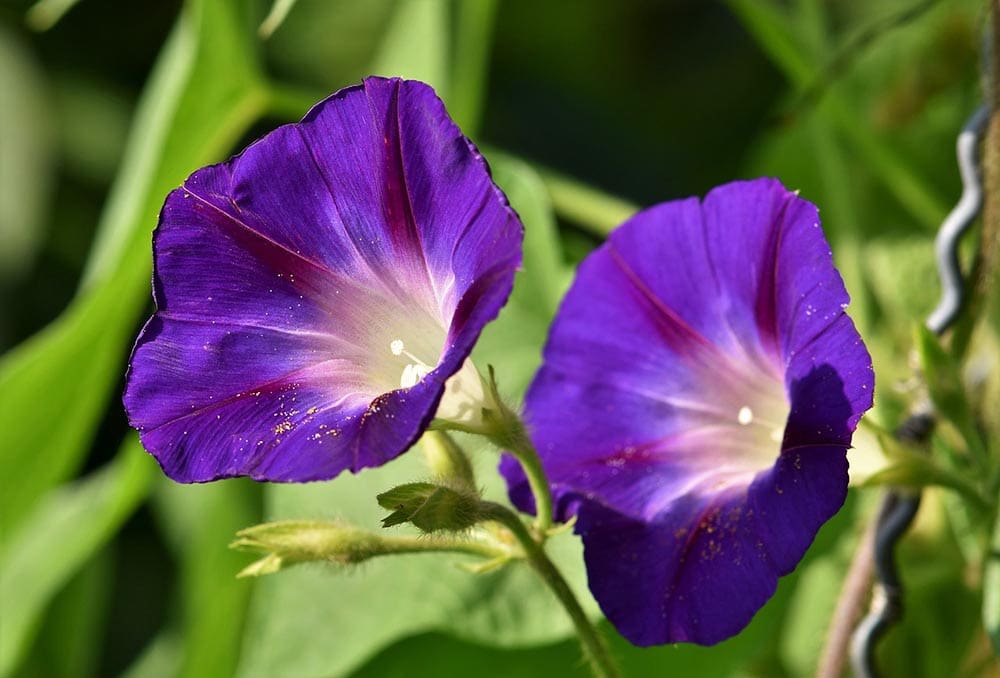
| Botanical Name: | Ipooea purpurea |
| Other Names: | None |
| Soil: | Well drained |
| Watering: | 1 inch a week |
Morning Glories have a trumpet-shaped face with bright colors that often attract butterflies and hummingbirds. These flowers are very hardy and can even become invasive if not controlled properly. You might want to grow Morning Glories in a container for this very reason.
36. Nightshade
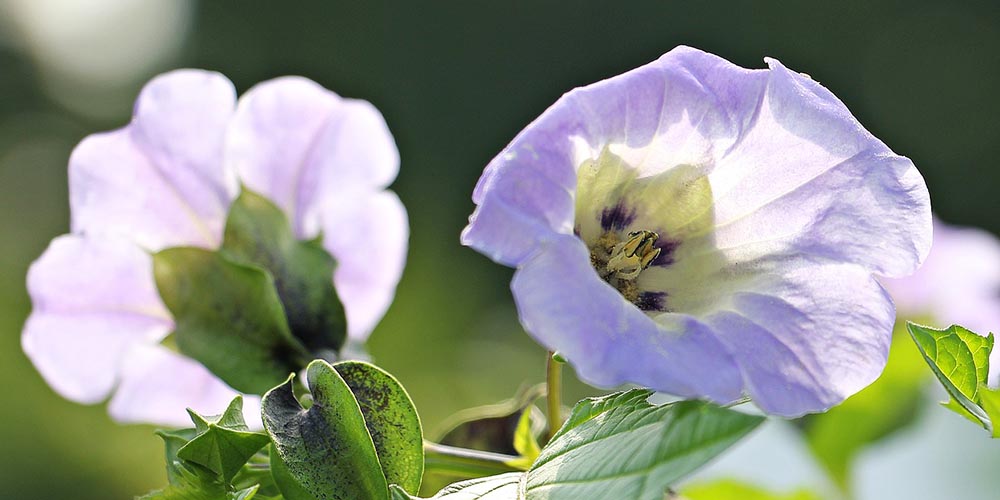
| Botanical Name: | Solanum dulcamara |
| Other Names: | Bittersweet Nightshade, Climbing Nightshade, Poisonberry |
| Soil: | Well drained |
| Watering: | Drought tolerant, prefers moderate moisture |
The Nightshade is a unique and beautiful flower with purple petals, a shooting star-like face, and bright yellow stamens. Be careful when growing Nightshades because many are either poisonous or considered invasive in North America.
37. Pansy
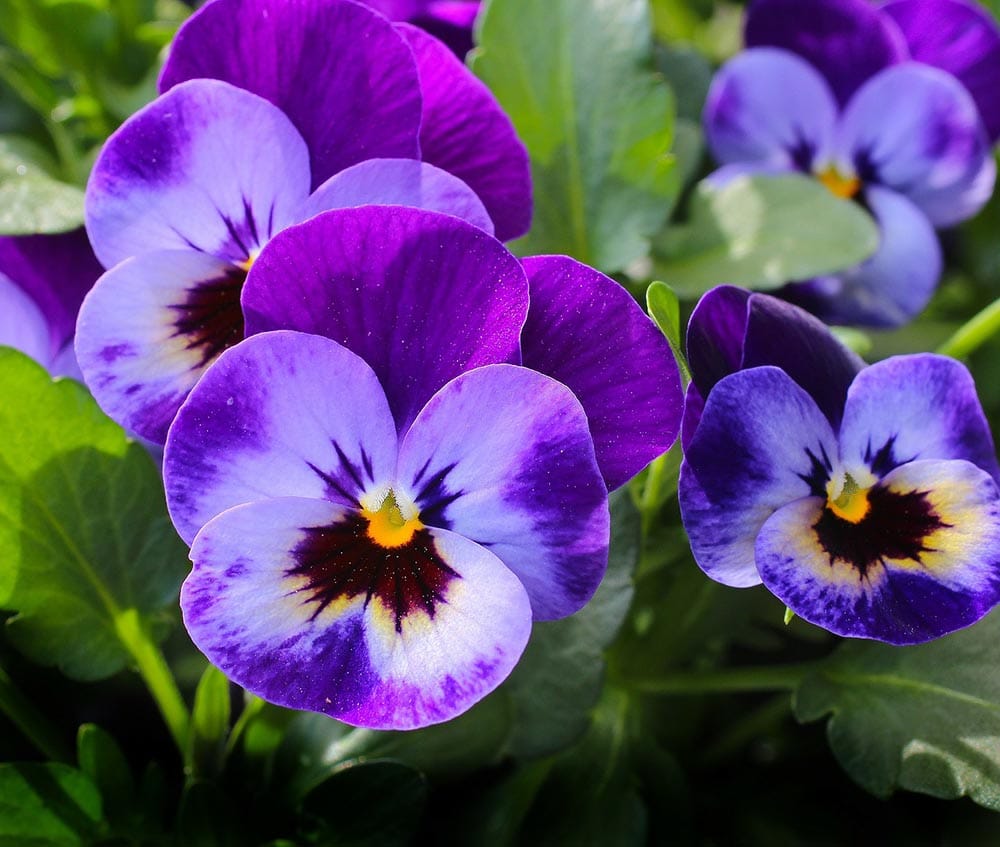
| Botanical Name: | Viola wittrockiana |
| Other Names: | Viola |
| Soil: | Well drained |
| Watering: | 1 inch a week |
The Pansy is a popular annual plant that features multiple colors on each blossom. You can usually fill beds and containers with these plants because they’re short but have spreading foliage.
38. Peony

| Botanical Name: | Paeonia |
| Other Names: | None |
| Soil: | Well drained, acidic |
| Watering: | 1 inch a week |
Peonies often are compared to roses but lack the pesky thorns. These flowers have large petals that are highly fragrant. Some tree peonies can even grow to be five feet wide and seven feet tall. So, only plant these flowers if you have a lot of space.
39. Petunia
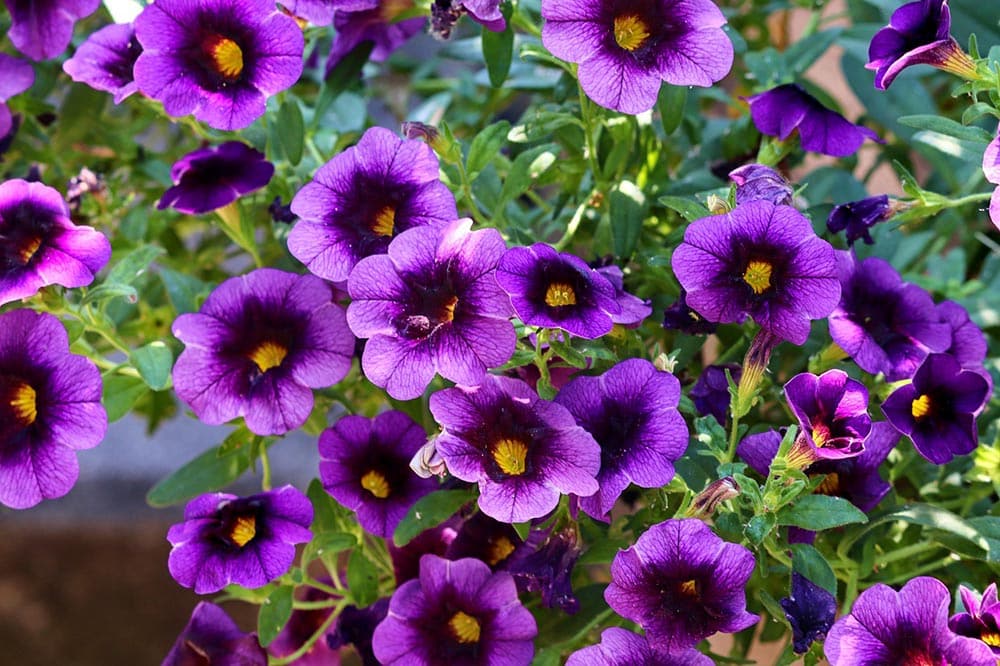
| Botanical Name: | Petunia |
| Other Names: | None |
| Soil: | Well drained |
| Watering: | Drought tolerant, prefers moderate moisture |
Petunias look beautiful in hanging baskets and filling beds. Most petunias today only grow to be 12 inches at most. Oddly enough, these gorgeous purple flowers share the same family with tomatoes and tobacco.
40. Primrose

| Botanical Name: | Onagraceae |
| Other Names: | None |
| Soil: | Well drained, rich acidic soil |
| Watering: | 1 inch a week |
The Primrose is one of the few flowers that is either native or naturalized on nearly every continent. As a result, you can easily plant Primroses in your garden, no matter where you live. The Primrose stands out because of its colorful sepal that matches its petals.
41. Rhododendron
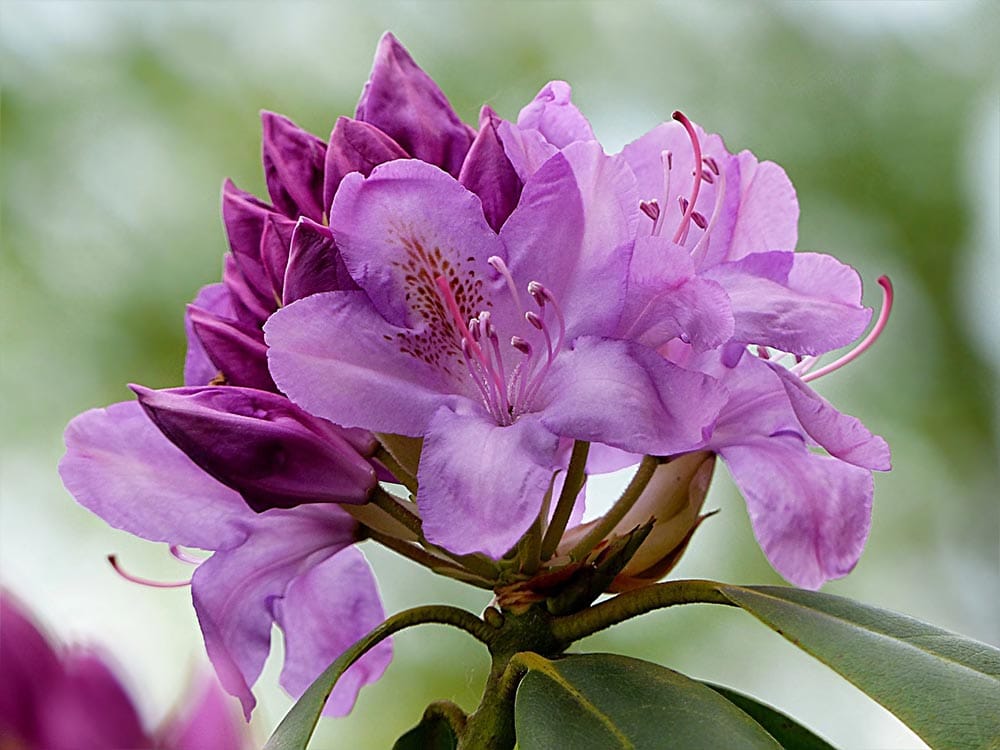
| Botanical Name: | Rhododendron |
| Other Names: | None |
| Soil: | Highly acidic |
| Watering: | 2 inches a week |
Often found with Azaleas, Rhododendrons are often used for large landscaping. These flowering shrubs are often evergreen and have large clusters of colorful flowers. Expect the shrub or tree to spread quite a bit.
42. Russian Sage

| Botanical Name: | Perovskia atriplicifolia OR salvia yangii |
| Other Names: | None |
| Soil: | Good drainage |
| Watering: | Draught tolerant |
Russian Sage looks a lot like Lavender because of its spikes of purple and blue. Like some of the other plants on this list, Russian sage is often used in herbal remedies and dye making.
43. Sea Thistle
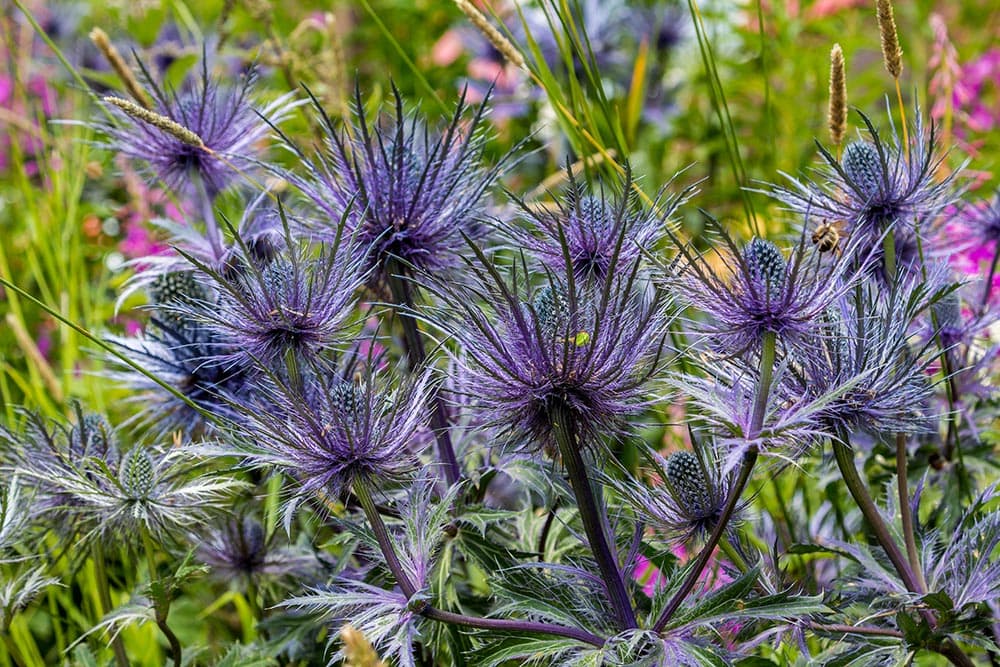
| Botanical Name: | Cirsium japonicum |
| Other Names: | None |
| Soil: | Any |
| Watering: | High moisture |
Sea Thistles are spiny like other thistles, but they have a beautiful purple flower that is feathery on top. More so, they are different from other thistles because they are often cut for bouquets.
44. Summer Lilac

| Botanical Name: | Buddleja davidii |
| Other Names: | None |
| Soil: | Rapid drainage, acidic to neutral |
| Watering: | 1 inch a week |
Summer Lilac is a cheerful shrub that is great for attracting pollinators. It has been popular since the 1800s, but it requires yearly pruning. Most add a wonderful honey scent to the air, which is why it does such a great job at attracting pollinators.
Related Read: 43 Common Types of Flowers in the US (with Pictures)
45. Sweet Pea

| Botanical Name: | Lathyrus odoratus |
| Other Names: | None |
| Soil: | Alkaline and loose soil |
| Watering: | 2 inches a week |
Sweet Peas often have two or more hues, which means they will show off a variety of purple tones. They also smell very sweet, which is where they get their name. These flowers need some support. So, plant them along the wall or trellis.
46. Tulip
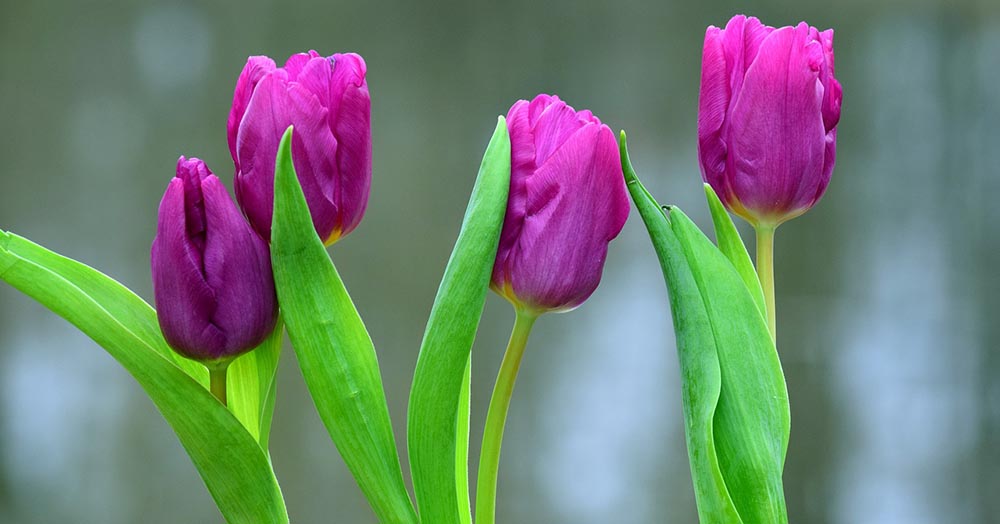
| Botanical Name: | Tulipa |
| Other Names: | None |
| Soil: | Acidic to neutral |
| Watering: | 1 inch a week |
Tulips have been the center of many gardening crazes and poems for centuries because of their beautiful look. These perennial bulbs shoot long stems and bright colors, including purple.
47. Wallflower

| Botanical Name: | Erysimum ‘Bowles’s Mauve’ |
| Other Names: | None |
| Soil: | Most |
| Watering: | 1 inch a week |
Wallflowers come in several varieties, but we recommend Bowles’s Mauve if you want purple flowers specifically. This Wallflower has dozens of bright clusters that stand out against most beds and borders. You can even plant them in such a way that they cascade over walls and edges.
48. Waxflower

| Botanical Name: | Chamelaucium |
| Other Names: | None |
| Soil: | Clay or sandy loam |
| Watering: | Draught resistant, 1 inch a week during dry. |
Although lesser known than many of the other flowers on this list, Waxflowers have a unique petaled form with a waxy feel. When crushed, the leaves have a strong scent, but you won’t smell it whenever the flowers are in bloom.
You might also be interested in: 7 DIY Wheelbarrow Planter Plans You Can Build Today
49. Wisteria
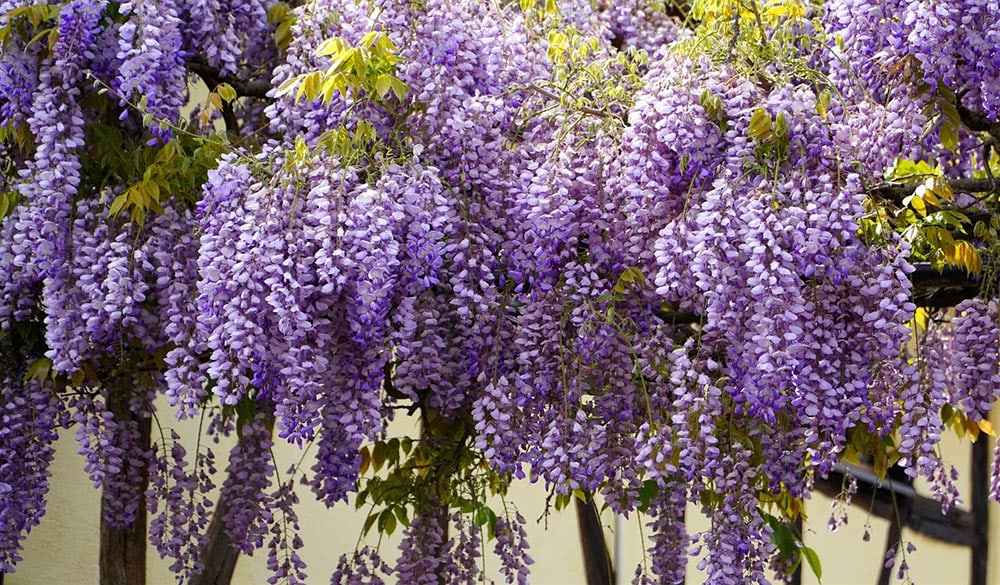
| Botanical Name: | Wisteria sinensis |
| Other Names: | None |
| Soil: | Most |
| Watering: | 1 inch a week |
Wisteria is a whimsical and beautiful plant that can grow as a vine or a tree. When you use a trellis for support, the Wisteria will vine around it and bloom beautifully. In contrast, you can plant it by itself, and the Wisteria will appear like a tree, but the blossoms will take longer to bloom.
50. Zinnia

| Botanical Name: | Zinnia |
| Other Names: | None |
| Soil: | Loose soil |
| Watering: | 1 inch a week |
In comparison to most flowers, Zinnias look a bit zany because of their bold yet feathered appearance. Most Zinnias are red and yellow, but you can find purple and pink petals too.
You might also be interested in: 6 DIY Potting Bench Plans You Can Build Today
Featured Image Credit: Pixabay
Contents

 The 50 Types of Purple Flowers
The 50 Types of Purple Flowers